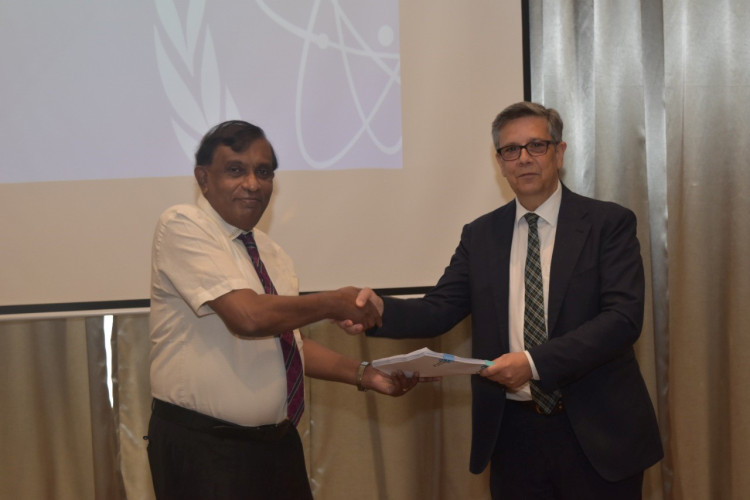An International Atomic Energy Agency (IAEA) team of experts has concluded a six-day mission to Sri Lanka to review the country’s infrastructure development for a nuclear power programme. The Integrated Nuclear Infrastructure Review (INIR) was carried out from 4 to 11 April at the request of the Government of Sri Lanka.
Sri Lanka is seeking to increase and diversify its power production capacity. The Government is looking at nuclear power as a reliable and low carbon option for its energy mix as it aims to achieve carbon neutrality of the electricity sector by 2050.
The INIR team reviewed the status of nuclear infrastructure development using the Phase 1 criteria from the IAEA's Milestones Approach, which provides detailed guidance across three phases of development (consider, prepare, construct). Phase 1 evaluates the readiness of a country to make a knowledgeable commitment to a nuclear power programme. The Sri Lanka Atomic Energy Board hosted the mission.
The INIR team made recommendations and suggestions to support the country in making further progress in developing its nuclear infrastructure.
“The INIR team concluded that Sri Lanka has engaged the relevant stakeholders in considering the introduction of nuclear power and initiated the appropriate studies to enable the Government to make a decision on the nuclear power programme,” said team leader Jose Bastos from the IAEA’s Nuclear Infrastructure Development Section.
The INIR team comprised five international experts from Algeria, the Czech Republic, Romania, the United Kingdom and the United States, and four IAEA staff.
Before the mission, Sri Lanka prepared and submitted a self-evaluation report and supporting documents covering all infrastructure issues to the IAEA.
The INIR team said that Sri Lanka needs to further develop its pre-feasibility study on introducing a nuclear power programme. The team also noted that Sri Lanka’s Nuclear Energy Programme Implementing Organization should prepare recommendations for the Government to make an informed decision on the nuclear power programme. The country also needs to complete its analysis of the legal and regulatory framework required for nuclear power, including preparations for establishing an independent regulatory body. Moreover, the team raised the need to further develop relevant human resources and competencies required for a nuclear programme. It called on the country to further intensify its already promising stakeholder involvement activities.
Welcoming the mission’s outcome, Professor S.R. D. Rosa, Chairman, Sri Lanka Atomic Energy Board said: “Sri Lanka is looking for nuclear power as a reliable, low carbon base load source of electricity to complement renewable energy sources in the future. Electricity is vital for society’s functioning, and the steady production of nuclear electricity will help us avoid shortages and outages. The results of this INIR mission will help us to move forward with the next steps in nuclear power development as Sri Lanka strives to further develop its economy and achieve the goal of zero emissions.”
About INIR Missions:
Integrated Nuclear Infrastructure Review (INIR) missions are based on the IAEA Milestones Approach, with its 19 Infrastructure Issues, three phases (consider, prepare, construct) and three milestones (decide, contract, commission and operate). INIR missions enable IAEA Member State representatives to discuss in-depth with international experts about experiences and best practices in different countries. In developing its recommendations, the INIR team considers the comments made by the relevant national organizations. Implementation of any of the team's recommendations and suggestions is at the discretion of the Member State requesting the mission. The results of the INIR mission are expected to help the Member State develop an action plan to fill any gaps, which will help the development of the national nuclear infrastructure. The IAEA publishes the INIR mission report on its website 90 days after its delivery to the Member State, unless the State requests in writing that the IAEA should not do so.


